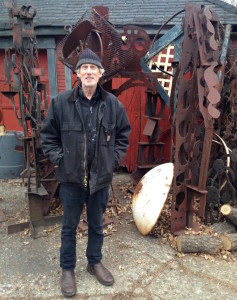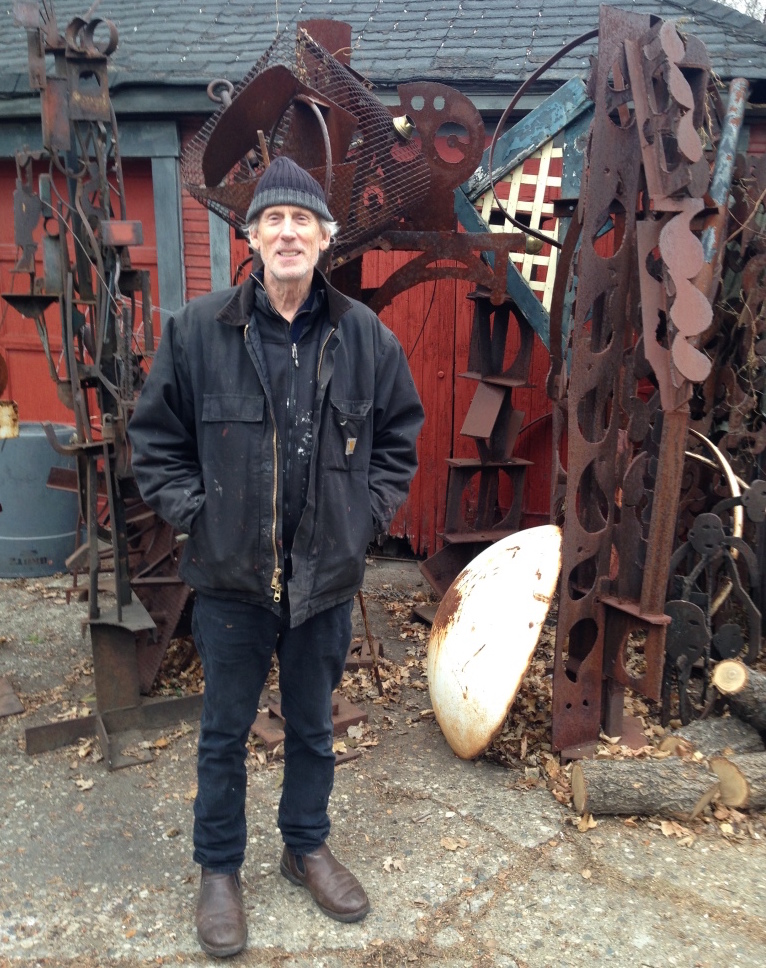
From robertsestok.net
“It is no accident that the Cass Corridor phenomenon occurred during a time when the younger generations were attempting to reinvent politics, culture, and morality in America in a politically charged era that included the assassinations of John F. Kennedy, Martin Luther King, Jr., and Malcolm X, the rise of drug guru Timothy Leary, the imagery of war in Vietnam on nightly television, and the killings at Kent State University. Following the anticommunist witch hunts of the McCarthy era, the civil rights struggles of the 1950s and 1960s, and the disillusionment with conformist suburban mythologies, the powerful sense of community established in the Cass Corridor produced an explosive synergistic energy and intense creative flowering.”
–Excerpts from “Art and the Industrial City,” by Dora Apel, in Up from the Streets, Detroit Art from the Duffy Warehouse Collection, ed. Jeffrey Abt, Elaine L. Jacob Gallery, Wayne State University, 2001
Born at Detroit’s nearby Harper Hospital, Sestok’s family later moved to Birmingham, Michigan where he spent much of his childhood, but by 1967 Sestok the artist had moved back to the Cass Corridor neighborhood and become part of the close-knit community of Detroit artists.
“The artist community of 1967 started the Willis Gallery, which was located where the Avalon Bakery is. We had that as an artist gallery for 20 years. And now we have so many artists in Detroit. When I started we were just a small group.”
When asked why he thought so many artists continue to come to Detroit as opposed to other cities, his answer was simple: “The freedom. I couldn’t have bought those two plots and put my artwork on it in New York City. It would have cost millions of dollars. Here I’m able to do something that’s a dream for me at this point in my life. I’m 68 years old, and hope to make it to 78.”
Right now, Sestok is involved in opening up an ‘Art Park’ which will be located on a medium-sized plot of land near Alexandrine and the Lodge Freeway. The park will feature many of Sestok’s own works, such as the ones that can be seen in the above photo where he is shown standing next to some of his welded steel sculptures behind the large red garage which he built himself. His skills as a retired carpenter are evident.
When asked about his memories of the El Moore during the ’60s and ’70s, Sestok recalled, “Well, it was kinda shabby. Run down. But it was all right. It was full of people.”
When asked about the rumor that members of the notorious and legendary Detroit rock band the MC5 used to live at the El Moore, Sestok laughed.
“They lived all over town,” he said.
But speaking of the MC5…
“I had an art show in a building up on Holden and 4th Street. It was called the Forsythe Building. There were like 17 artists living in this building. Some people were living there, and some people just had their studio. And so we put on a big art show, and I got advertising on the radio and I made a flyer and we had 50 artists in the show, and I got to curate the show, and that was my first job of curating an art show. So I hired the MC5 to come and play in the show, and we’re all inside listening to the MC5 and having a good old time, and the police are outside, and the police owned the building! They were outside making sure nothing bad was gonna happen to the building, because it was all wood and could have caught on fire.
“So that was interesting.”

